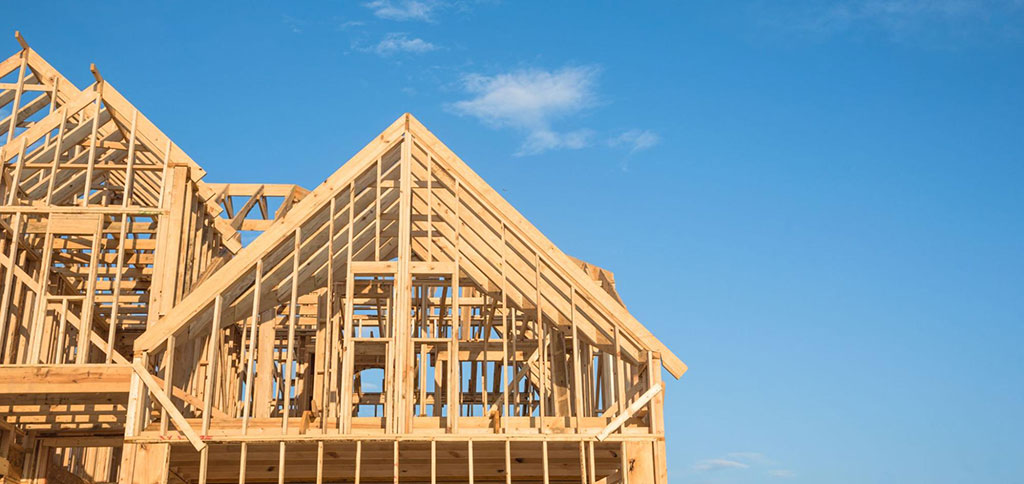6 Benefits of Post-Frame Construction

Post-frame construction is a building technique that started almost 100 years ago in rural communities. Farms began increasing in acreage, and newly-powered equipment was too sizable for traditional buildings to house them. Post-frame construction emerged as an inexpensive, quick, and efficient way to adapt to those growing needs, allowing barns to be built with large, open spaces inside.
Once architects and builders caught on to the method’s efficiency, it expanded into many other applications other than just agricultural use. It’s now a popular form of construction for commercial, industrial, recreational, and even residential buildings. Several factors make post-frame construction an advantageous way to build.
6 Benefits of Post-Frame Construction
- Build speed – When roof trusses arrive on site preassembled, it cuts down on time spent at the jobsite. Using metal roofing and siding, which are often staples of post-frame buildings, also speeds up the process.
- Affordability – Excavation and concrete used for foundations or basements make up a significant portion of the cost of building. Since post-frame construction doesn’t require either, it’s much more economical. Less labor and fewer required materials are also cost-cutting factors of post-frame construction.
- Reduced labor needs – Because roof trusses arrive to the jobsite pre-manufactured, this reduces the amount of personnel hours required for construction, helping to reduce both build time and cost.
- Durability – The architectural design of post-frame buildings has proven to be exceptionally strong. Because structural poles are directly anchored into the ground, the final product is resistant to high winds and other extreme weather.
- Design flexibility – Large, open interiors lend themselves to endless possibilities of configurations. You may be fooled by the fact that more buildings are built by post-frame construction than you are aware. They’ve come a long way in design.
- Energy efficiency – Because posts are spaced at least 8 feet apart, wall cavities are vast, meaning more insulation can be used. This decreases heat transfer, increases efficiency, and lowers the cost of heating and cooling.
Post-Frame vs. Stick Frame Construction
Traditional buildings, built with stick-frame construction, have complex frameworks, are typically built upon a crawl-space or basement, and use internal walls to support their loads.
On the other hand, post-frame construction consists of a simple framework with roof trusses playing a major role. Roof trusses are secured to large posts that together form one solid structure. The posts are buried several feet into the earth and transfer loads directly to the ground. Concrete piers or a slab foundation can also be used, but aren’t necessary. Horizontal cross beams are then installed to form a solid framework, and a variety of siding can cover it.
Common Applications for Post-Frame Construction
As mentioned above, post-frame construction has become more versatile as a building method. Its efficiency, ease, and affordability allow for unlimited design possibilities based on your functional needs. A few common applications for post-frame construction include:
- Agricultural – Post-frame construction’s roots are in agriculture. The original purpose of post-frame construction was to build barns, including “pole barns”. The open space can be configured to suit stalls for livestock, arenas, or outbuildings for large equipment.
- Industrial – It’s ideal for warehouses, plants, and storage facilities.
- Commercial – Any low-rise buildings, including municipal buildings, stores, offices, churches, recreational facilities, and schools can customize post-frame construction to suit its purpose. With so many options of siding — steel, vinyl, brick, or stone facades — each building can have its own unique look.
- Residential – While garages and workshops are thought to be the only use of residential post-frame construction, home builders are now using it for the homes themselves after taking notice of the more modern designs and materials that are now available. You might be pleasantly surprised by the aesthetics.
At Standard Supply & Lumber, we’re huge proponents of post-frame construction. In fact, we manufacture our trusses in our component shops, specifically for post-frame construction clients! When you work with us, you work with the best. Start your next post-frame construction project by contacting our team online today.
